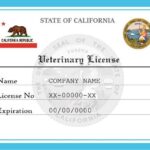In today’s rapidly evolving digital and creative landscape, protecting your original ideas and creations has never been more important. Whether you’re an artist, entrepreneur, or inventor, understanding the basics of intellectual property (IP) law is key to safeguarding your work from unauthorized use or imitation. Intellectual property law governs the legal rights to creations of the mind—spanning inventions, literary works, designs, symbols, and more. This guide offers a comprehensive introduction to intellectual property law for beginners, helping you navigate the core concepts and protections available for your valuable innovations.
What is Intellectual Property Law?
Intellectual property (IP) law grants creators exclusive rights to their creations. These laws are designed to protect various forms of intellectual work, ensuring creators can control how their work is used and benefit financially from it. For beginners, understanding the different categories of IP rights is the first step toward safeguarding your creative output.
The Four Main Types of Intellectual Property:
- Copyright: Copyright protects original works of authorship, such as books, music, films, software, and visual art. It gives the creator exclusive rights to reproduce, distribute, perform, and display the work. The protection is automatic upon creation but registering with a government agency strengthens your legal standing in case of disputes.
- Trademarks: A trademark is a sign, symbol, word, or phrase that identifies and distinguishes the source of goods or services. For example, the Nike swoosh or McDonald’s golden arches are trademarks. Trademarks help build brand identity and prevent others from using similar identifiers that could confuse consumers.
- Patents: Patents grant exclusive rights to inventors for a limited time, allowing them to make, use, or sell their inventions. There are different types of patents: utility patents for new processes or machines, design patents for the ornamental design of products, and plant patents for new plant varieties.
- Trade Secrets: Trade secrets are confidential business information that gives a company a competitive edge, like the recipe for Coca-Cola. Unlike other forms of IP, trade secrets are protected as long as they remain undisclosed.
Why is Intellectual Property Protection Important?
Understanding intellectual property law for beginners is crucial because it helps creators and businesses protect their innovations from theft or misuse. Without proper protection, your original work can be copied, distributed, or exploited without your consent—causing both financial loss and damage to your reputation.
Here are some key reasons why protecting your intellectual property is essential:
- Monetary Benefits: Owning IP rights allows you to license or sell your creations, earning revenue from your work. For example, a musician with copyrighted songs can earn royalties whenever their music is played.
- Business Growth: Trademarks, patents, and trade secrets often form the backbone of successful businesses. Patented technology or a distinctive brand identity can provide a competitive advantage in the marketplace.
- Legal Recourse: Registering your IP makes it easier to take legal action against infringers. If someone uses your work without permission, you can enforce your rights through lawsuits or settlements.
How to Protect Your Intellectual Property
For beginners, protecting your intellectual property might seem daunting. However, following a few clear steps can help secure your creations. Here’s a basic guide to getting started:
1. Identify What Needs Protection
Not all ideas can be protected, but tangible creations or inventions can. For example, a new app can be patented, and its logo can be trademarked, while a screenplay can be copyrighted.

2. Register Your IP Rights
While some protections (like copyright) are automatic upon creation, registering your IP with relevant authorities strengthens your claim. For example, in the United States, you would apply for a trademark with the U.S. Patent and Trademark Office (USPTO) or register a copyright with the U.S. Copyright Office.
3. Monitor Your IP
Once you have protection in place, it’s essential to monitor the market for potential infringement. Many companies hire services that alert them if their trademarks or patents are being misused.
4. Enforce Your Rights
If you discover that someone is infringing on your intellectual property, you have the right to take legal action. This could involve sending a cease-and-desist letter, negotiating a settlement, or filing a lawsuit.
Real-World Examples of Intellectual Property Protection
Many famous companies and creators have leveraged IP law to protect their work and maintain their competitive edge. Consider these examples:
- Apple Inc. holds numerous patents for its iPhone technology. These patents ensure that other companies can’t legally replicate its innovations, allowing Apple to maintain its market dominance.
- J.K. Rowling holds copyrights for the Harry Potter books and has trademarked related names and images, which ensures that she retains control over all products and media derived from the Harry Potter universe.
- The Coca-Cola Company has kept its formula a trade secret for over 100 years, allowing the company to maintain an advantage over competitors.
FAQs on Intellectual Property Law for Beginners
Copyright protects original works like books or songs, while a patent protects inventions and technological innovations.
While not required, working with a lawyer who specializes in intellectual property law can ensure your application process is smooth and increases your chances of success.
Copyrights typically last the life of the creator plus 70 years, trademarks can be renewed indefinitely, and patents last up to 20 years depending on the type.
Failing to register may limit your ability to enforce your rights in case of infringement. It’s especially crucial for trademarks and patents, as these protections require formal registration.
Yes, you can trademark both a logo and a business name, ensuring comprehensive brand protection.
Costs vary depending on the type of protection and the jurisdiction. Patent applications tend to be more expensive, while trademark and copyright filings are more affordable.
Key Takeaways
- Intellectual property law offers various protections for creators, including copyrights, trademarks, patents, and trade secrets.
- IP protection is crucial for preventing unauthorized use of your creations and ensuring you can benefit from your work.
- Registering your IP rights strengthens your legal position and offers greater enforcement capabilities.
- Monitoring and enforcing your IP rights is an ongoing process essential for long-term protection.
In summary, understanding intellectual property law for beginners is vital for anyone looking to protect their creative or innovative works. Taking the right steps early on can help safeguard your intellectual property and ensure that you reap the benefits of your hard work.
Read More: How to Register a Trademark for Your Small Business
- United States Patent and Trademark Office (USPTO): https://www.uspto.gov
(The official government site for patent and trademark registrations and information in the United States.) - World Intellectual Property Organization (WIPO): https://www.wipo.int
(WIPO is a global organization that provides comprehensive resources on intellectual property laws and international treaties.) - U.S. Copyright Office: https://www.copyright.gov
(The official source for copyright registration and information in the United States.)
These resources provide in-depth and up-to-date information on intellectual property protection and processes.










